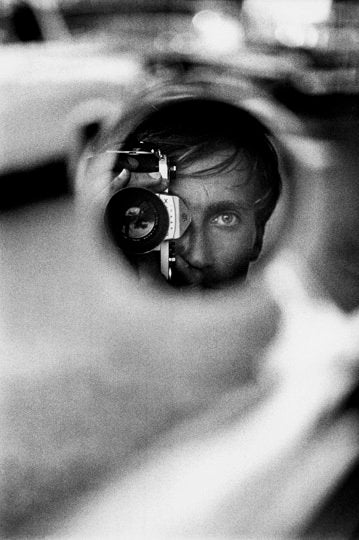Few names evoke the same reverence and allure as Jeanloup Sieff. Renowned for his ability to blend elegance with a hint of eroticism, Sieff's work has left an indelible mark on the world of fashion and art photography. Born in Paris in 1933, Sieff's career spanned over four decades, during which he captured some of the most iconic images of the 20th century. His black-and-white photographs, characterized by their dramatic use of light and shadow, continue to captivate.

The Early Years: A Prelude to Greatness
Jeanloup Sieff's journey into photography began somewhat serendipitously. Initially studying literature and journalism, he soon found himself drawn to the visual allure of the camera. Enrolling in the Vevey School of Photography in Switzerland, Sieff honed his craft, developing a keen eye for composition and an innate understanding of the subtleties of light. His early work was deeply influenced by the humanist photographers of his time, capturing everyday life with a poetic sensibility.
The Parisian Pulse: Fashion and Beyond
Sieff's move to Paris in the late 1950s marked a turning point in his career. The city's vibrant fashion scene provided the perfect backdrop for his burgeoning talent. It wasn't long before his work caught the attention of major fashion magazines such as Elle, Vogue, and Harper's Bazaar. His fashion photography stood out for its sophisticated sensuality and bold compositions. Models draped in haute couture, set against minimalist backgrounds, became a signature of Sieff's style.
One of his most celebrated images from this period is the portrait of Yves Saint Laurent, taken in 1971. The photograph, with its stark contrast and intimate gaze, encapsulates Sieff's ability to reveal the essence of his subjects. This skill extended beyond fashion; his portraits of celebrities, including Alfred Hitchcock, Rudolf Nureyev, and Jane Birkin, offer a glimpse into the soul of each individual, stripped of pretense and artifice.


The Dance of Light and Shadow
What truly sets Sieff apart is his masterful use of light and shadow. His photographs often play with high contrasts, creating a dramatic interplay that adds depth and intensity to his images. This technique is perhaps best exemplified in his nudes. Unlike the overt eroticism prevalent in much of contemporary photography, Sieff's nudes are a study in elegance and form. The human body, in his lens, becomes a landscape of curves and lines, bathed in a chiaroscuro that accentuates its natural beauty.
His series "The Body," published in the 1980s, is a testament to this approach. The images, predominantly black-and-white, are both intimate and monumental. They challenge the viewer to see the human form not just as an object of desire but as a work of art in itself.


Legacy and Influence
Jeanloup Sieff's influence extends far beyond his lifetime. His work continues to inspire photographers and artists, offering a timeless lesson in the power of simplicity and the beauty of the human form. His ability to capture the essence of his subjects, whether through the lens of fashion or portraiture, remains unmatched.
In a world where photography often leans towards the ephemeral and the sensational, Sieff's work is a reminder of the enduring power of the image. His photographs are not just a reflection of the world around him but a window into the deeper currents of emotion and beauty that define the human experience.

Jeanloup Sieff's career is a testament to the transformative power of photography. Through his lens, fashion became art, light became a storyteller, and the human body a canvas of endless possibility. His legacy, immortalized in his evocative images, continues to captivate and inspire. In the annals of photographic history, Jeanloup Sieff's name shines brightly, a beacon of creativity, elegance, and timeless beauty.




